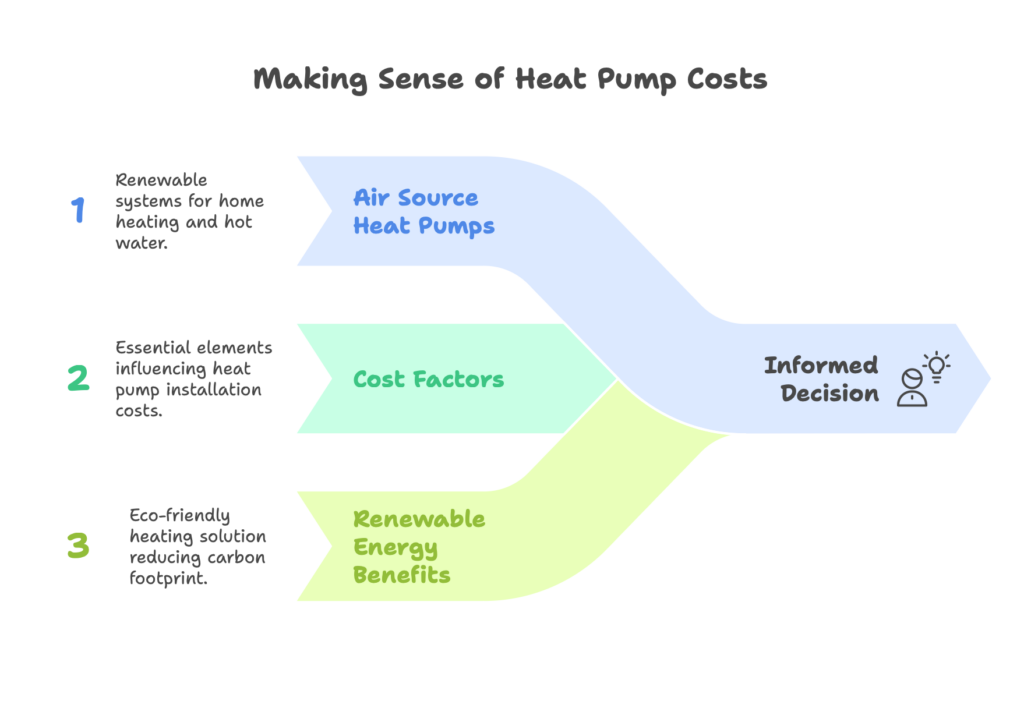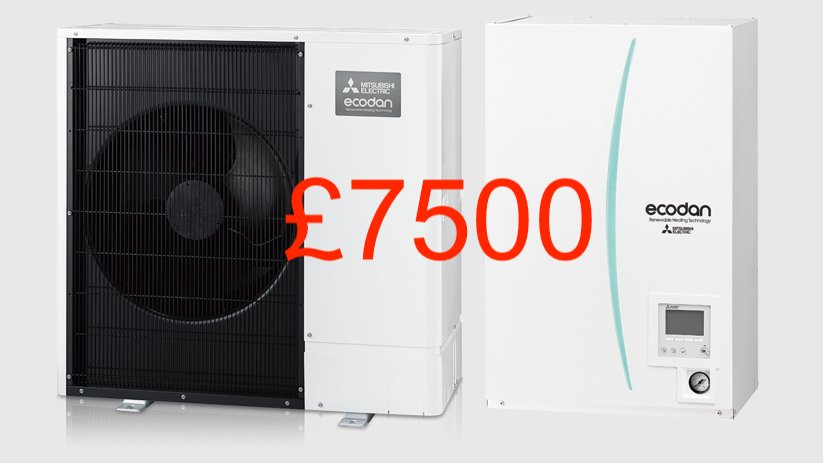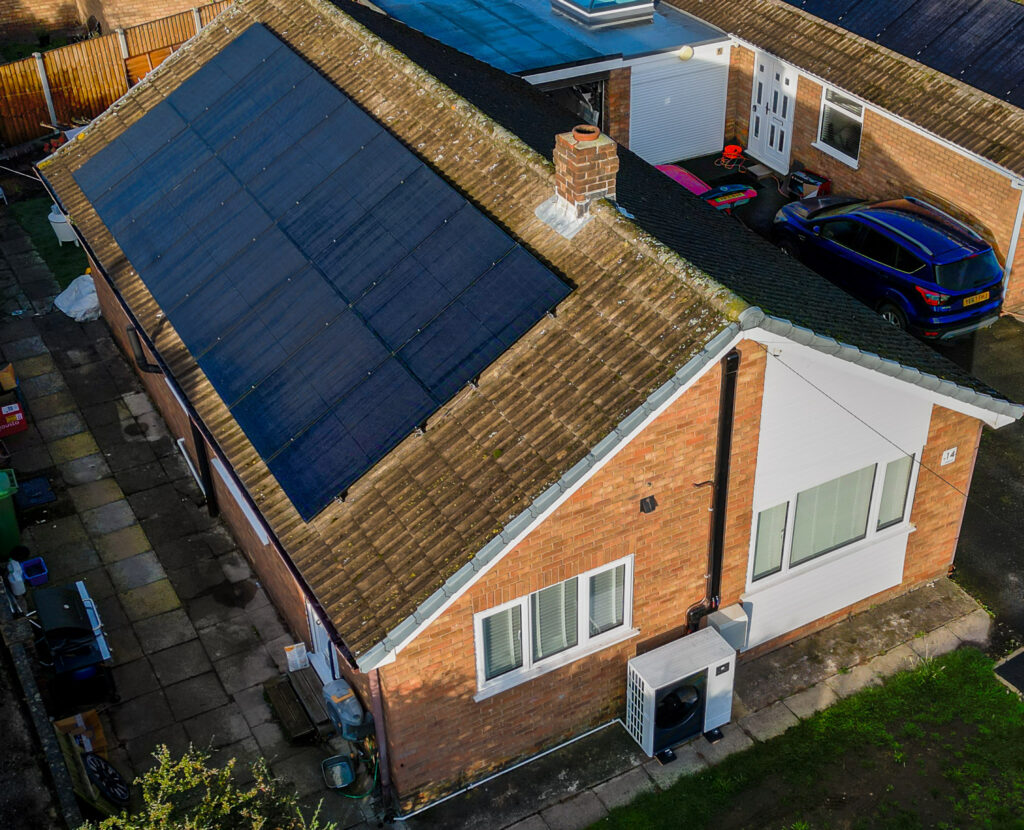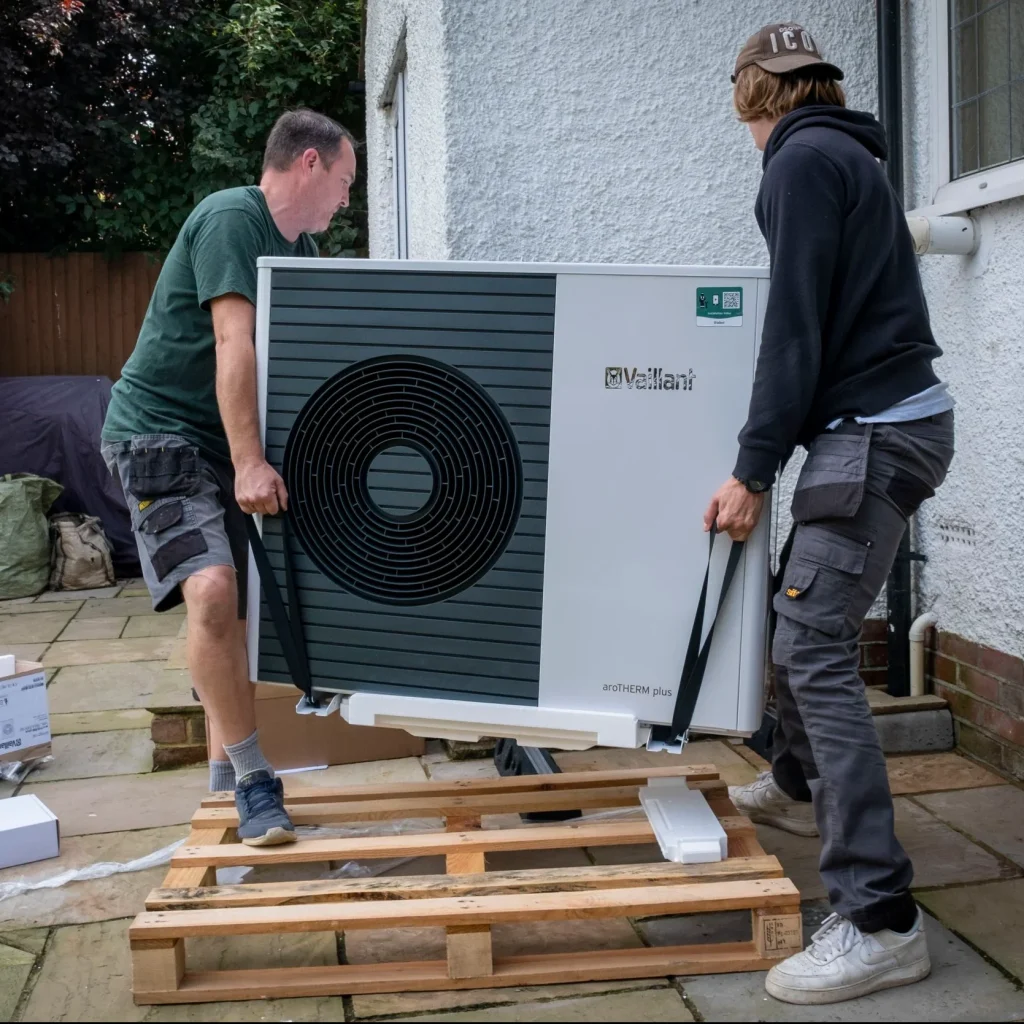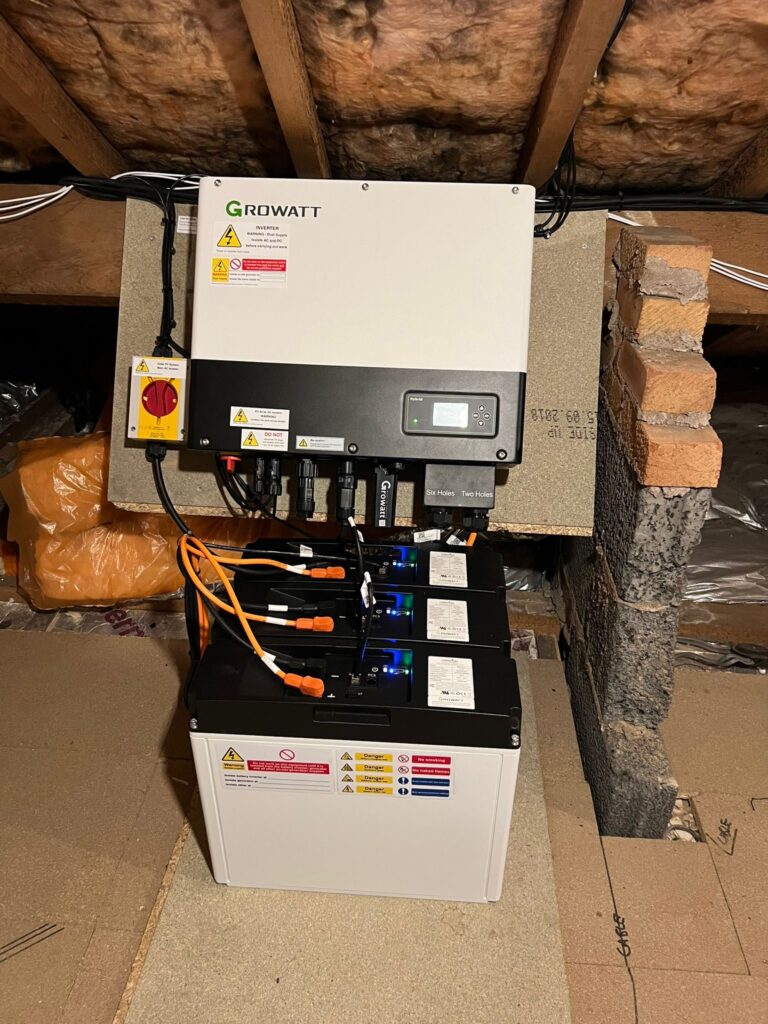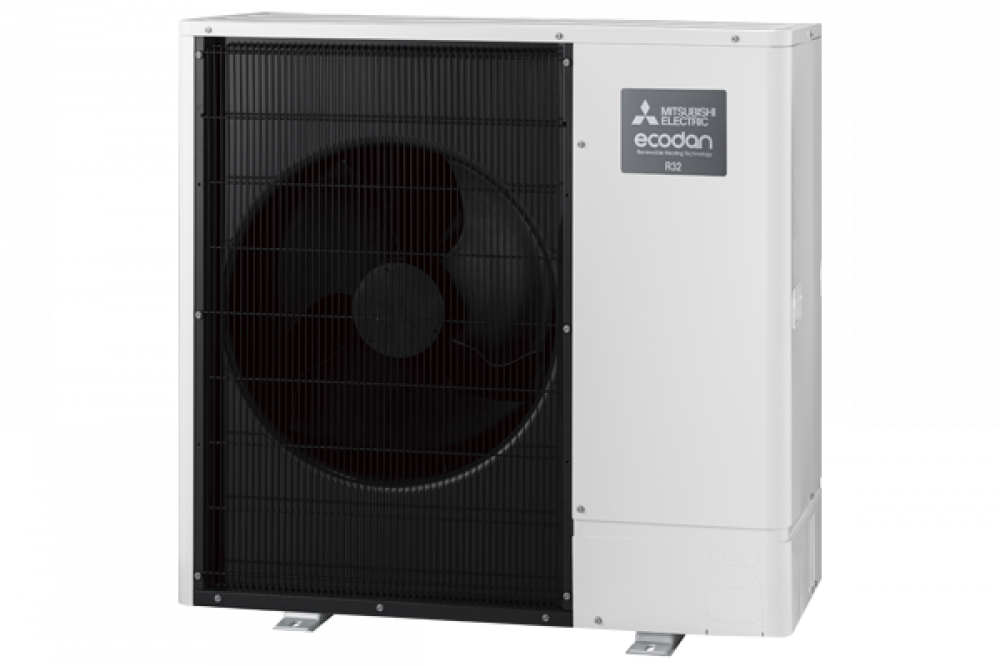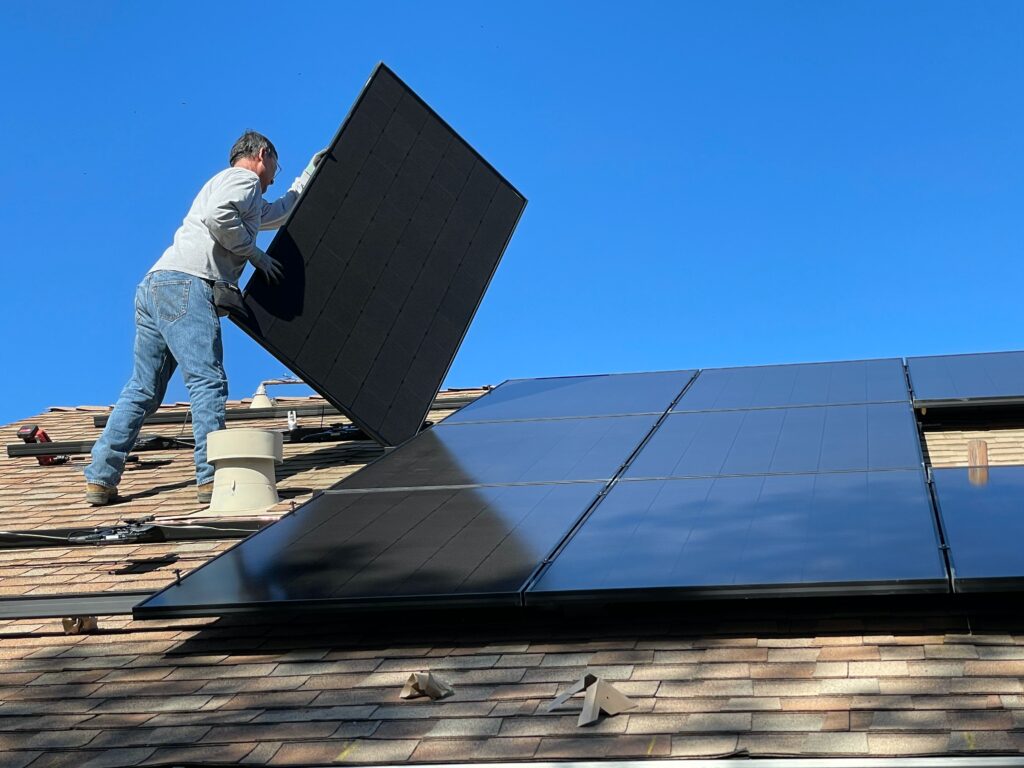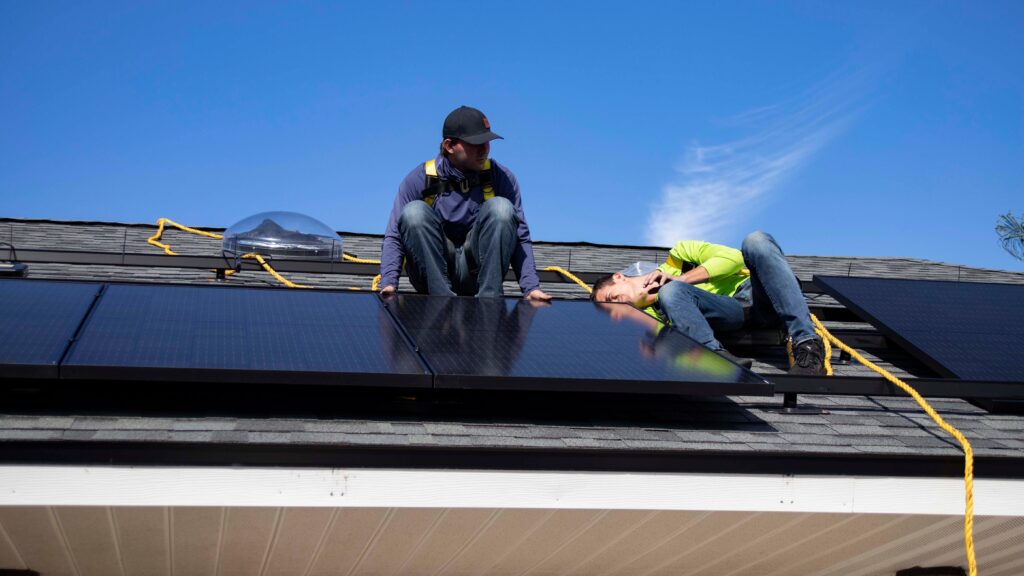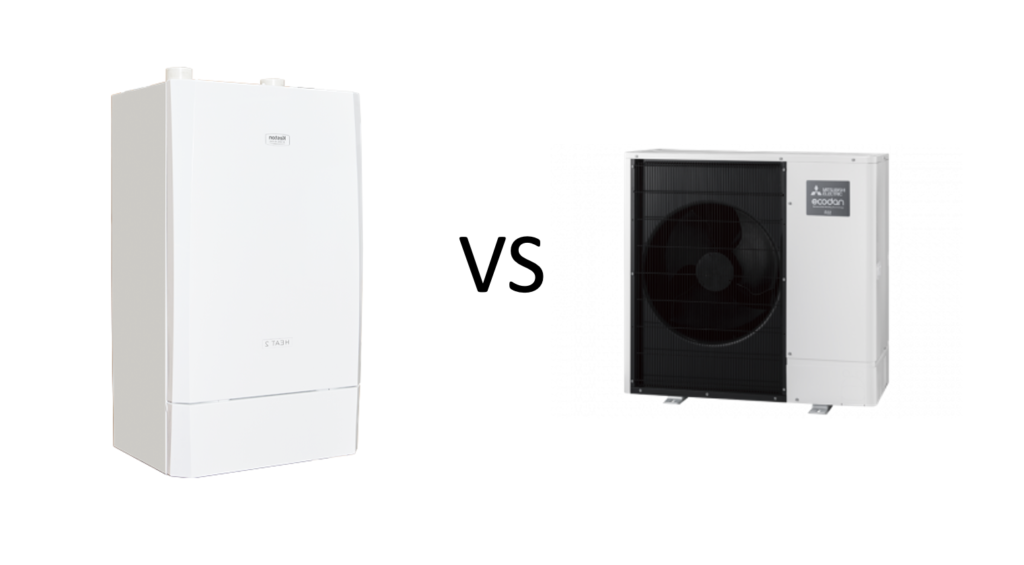Understanding Air Source Heat Pump Costs and Savings in the UK
Introduction To Heat Pumps
If you’re considering an upgrade to your home’s heating system, understanding the air source heat pump cost is essential for making an informed decision. Air source heat pumps are renewable energy systems that extract heat from the outside air to provide heating and hot water for homes.
These systems have gained significant popularity in the UK due to their efficiency and environmental benefits. They align perfectly with the UK’s goals to reduce carbon emissions and promote sustainable energy solutions.
Before making any investment, it’s important to understand not just the costs, but also the efficiency ratings and available grants that can help offset the initial expense. This knowledge will help you decide if an air source heat pump is the right choice for your home and budget.
Air source heat pumps offer a forward-thinking approach to home heating, one that could save you money while reducing your carbon footprint. Let’s explore everything you need to know about these systems, from how they work to what they’ll cost you.
What Are Air Source Heat Pumps?
Definition and How They Work
Air source heat pumps (ASHPs) are systems that transfer heat from the outside air into a home, providing both heating and hot water. Even in cooler temperatures, there’s still heat energy present in the air that these pumps can capture and use.
The process works through several key steps:
- The heat pump extracts heat from the outside air using an external unit.
- A refrigerant fluid absorbs this heat and evaporates into a gas.
- This gas passes through a compressor, which increases its temperature.
- The higher temperature gas then transfers its heat to your home’s heating and hot water circuits.
- The refrigerant cools back to a liquid state and the cycle continues.
There are two main types of air source heat pumps in the UK:
- Air-to-Air Heat Pumps: These systems provide heating (and sometimes cooling) through indoor fan coil units. They don’t provide hot water, making them less common in standard UK homes.
- Air-to-Water Heat Pumps: These are more popular in the UK as they provide both heating and hot water. They’re particularly suitable for underfloor heating systems or larger radiators, which work effectively at lower water temperatures than standard radiators.
Comparison to Ground Source Heat Pumps
When looking at air source heat pump vs ground source options, there are several key differences to consider:
Air Source Heat Pumps:
- Extract heat from the air
- Easier and less expensive to install
- Require less space
- Efficiency can decrease in extremely cold temperatures
- Typically lower initial costs
Ground Source Heat Pumps:
- Extract heat from the ground
- More efficient due to stable ground temperatures
- Higher installation costs
- Require significant land for horizontal loops or drilling for vertical loops
- Better performance in very cold weather
For most UK homeowners, air source heat pumps offer a good balance of cost, efficiency, and practicality. They don’t require extensive groundwork and can be installed in most properties with suitable outdoor space.
Air source heat pumps extract heat from the outside air to provide heating and hot water, offering a sustainable alternative to traditional fossil fuel-based systems. In comparison to ground source heat pumps, air source heat pumps are generally less expensive to install but may be less efficient in extremely cold climates.
Air Source Heat Pump Costs
Understanding Installation Costs
When planning your budget, the air source heat pump installation cost is likely your first consideration. In the UK, these costs can vary widely, typically ranging from £10,000 to £20,000, depending on several factors.
The total air source heat pump costs can be broken down into several components:
Supply Costs: For Air-to-Water systems, which are the most common in UK homes, the unit alone costs between £5,000 and £9,000. This includes the heat pump unit but not the installation or any additional system components.
Installation (Labour) Costs: The labour required to fit your system properly ranges from £6,000 to £11,000. This covers the professional installation of the heat pump, connection to your existing heating system, and all necessary testing.
Additional Costs: Many homes require system upgrades to work efficiently with a heat pump. This might include:
- Larger radiators or underfloor heating (£2,000-£8,000)
- Hot water cylinder installation (£1,500-£2,000)
- Improved insulation (costs vary widely)
- Control system upgrades (£500-£1,000)
Factors Influencing Installation Costs
Several key factors can affect your total air source heat pump installation cost:
- Property Size and Insulation: Larger homes need more powerful heat pumps. Poorly insulated properties may need additional work to prevent heat loss, increasing costs.
- Type of Heat Distribution System: If your current radiators aren’t suitable for lower temperature operation, you might need to replace them with larger ones or install underfloor heating.
- Complexity of Installation: Difficult access, the need for extensive pipework, or complicated integration with existing systems can all increase labour costs.
- Location: Labour rates vary across different regions in the UK, affecting your overall installation cost.
- Brand and Model: Premium brand heat pumps often cost more but may offer better efficiency or reliability.
Ongoing Costs
Beyond installation, you need to consider the long-term expenses:
Maintenance Costs: Air source heat pumps require relatively little maintenance. An annual service costs around £150-£300, which is similar to a gas boiler service.
Operational Costs: The average annual running cost for an air source heat pump is between £540 to £1680 for an average household. This varies based on your home’s size, insulation quality, and local electricity prices.
Potential Savings
Despite the higher upfront air source heat pump costs, many homeowners find they save money in the long run:
- Heat pumps are typically 350-450% efficient in British weather conditions, compared to around 90% for the best gas boilers
- Electricity prices are more stable than gas prices, making costs more predictable
- The system’s lifespan of 20-25 years is longer than the 10-15 years expected from a gas boiler
- Government grants (discussed later) can significantly reduce initial costs
For a typical three-bedroom semi-detached house, switching from a gas boiler to an air source heat pump might increase annual heating costs slightly, but switching from oil, LPG, or electric heating usually results in immediate savings.
The air source heat pump installation cost in the UK typically ranges from £10,000 to £20,000, depending on the system type and installation complexity. (not including government grants)
- Supply Costs: Air-to-water systems can cost between £5,000 and £9,000 for the unit alone.
- Installation Costs: Labour costs can range from £6,000 to £11,000.
- Additional Costs: Upgrades like larger radiators or underfloor heating can add significant expenses.
- Ongoing Costs: Annual running costs around £950 for an average household.
Air Source Heat Pump Efficiency
Understanding Efficiency
Air source heat pump efficiency is measured using specific metrics that tell you how effectively the system converts electricity into heat. These metrics are essential for comparing different models and understanding potential energy savings.
The two most important efficiency measures are:
Coefficient of Performance (COP): This is the ratio of heat output to the electrical energy input. A COP of 4 means the heat pump produces 4 units of heat energy for every 1 unit of electricity it consumes. This makes it 400% efficient—far better than any traditional heating system.
Seasonal Performance Factor (SPF): This gives a more realistic picture of performance as it measures the average COP over an entire heating season, accounting for temperature variations. The SPF is typically lower than the peak COP but provides a better real-world efficiency estimate.
Efficiency of Air Source Heat Pumps
Modern air source heat pumps can deliver impressive efficiency levels:
- Typical COP ranges from 3 to 5, meaning they are 300-500% efficient, dependant on flow temperature.
- They can deliver up to four times more heat energy than the electrical energy consumed
- This compares to around 90% efficiency for modern gas boilers
Several factors affect the air source heat pump efficiency in real-world conditions:
- Outdoor Temperature: As the outside temperature drops, efficiency decreases because there’s less heat energy in the air to extract. However, most modern systems still perform well even at temperatures well below freezing.
- Flow Temperature: Heat pumps work most efficiently when delivering heat at lower temperatures (35-50°C) compared to traditional boilers (60-70°C). This is why they work best with underfloor heating or oversized radiators.
- Maintenance: Regular servicing keeps your system running at peak efficiency.
- System Design: A properly sized and designed system will operate more efficiently than one that’s too large or too small for the property.
Impact on Cost Savings
The high air source heat pump efficiency translates directly into potential savings:
- If your heat pump has a COP of 3, you’ll get 3kW of heat for every 1kW of electricity used
- This can mean significant savings compared to direct electric heating
- Savings compared to gas heating depend on the relative price of gas and electricity
For example, if electricity costs 22p per kWh and gas costs 8p per kWh, a heat pump with a COP of 4 would cost about 5.5p per kWh of heat produced (23p ÷ 4), making it competitive with gas heating while also being much more environmentally friendly.
When selecting a heat pump, look for models with high COP and SPF ratings. Remember that paying more for a more efficient model often makes financial sense in the long run due to lower operating costs.
Air source heat pumps are highly efficient, delivering up to four times more heat energy than the electrical energy consumed.
Efficiency is measured by the Coefficient of Performance (COP) and Seasonal Performance Factor (SPF). Learn more about energy efficiency ratings.
Financial Incentives and Heat Pump Grants
Available Grants in the UK
Understanding available grants can significantly reduce your air source heat pump costs, making this renewable heating solution more affordable. The UK government offers several incentives to encourage homeowners to switch to low-carbon heating systems.
Government Schemes
The main financial support available for heat pumps in the UK is the Boiler Upgrade Scheme (BUS):
England and Wales:
- Provides up to £7,500 towards the installation of an air source heat pump
- This is a significant contribution, often reducing the net cost to homeowners by about 50%
- The grant is applied directly by your installer, so you don’t pay the full amount upfront
Scotland:
- Offers even more generous support, with grants reaching up to £9,000 for rural areas
- The Home Energy Scotland Loan and Cashback Scheme provides interest-free loans with cashback for renewable heating systems
- This can be combined with other local incentives
To be eligible for the Boiler Upgrade Scheme, you must meet certain criteria:
- You must be a homeowner or small business owner
- You must be replacing an existing fossil fuel heating system (like a gas, oil, or LPG boiler)
- Your property must have an energy performance certificate (EPC) with no outstanding recommendations for loft or cavity wall insulation
- The installation must be carried out by an MCS-certified installer, which you can fid by leaving your details with compare renewables.
Local Authority Initiatives
Beyond national schemes, many local authorities offer additional support:
- Some councils provide supplementary grants for renewable energy installations
- Others offer reduced council tax for homes with energy-efficient improvements
- Local energy efficiency programs may offer free assessments or advice
It’s worth contacting your local council directly to ask about any local schemes that might help with your air source heat pump costs.
Application Process
The process for applying for grants involves several steps:
- Find an MCS-accredited installer: They’ll need to assess your property and provide a quote.
- Check eligibility: Your installer will verify you meet all requirements for the grant.
- Installer applies for grant: For the Boiler Upgrade Scheme, your installer applies on your behalf.
- Grant approval: Once approved, the installer will deduct the grant amount from your quote.
- Installation: The system is installed and commissioned.
- Certification: You’ll receive MCS certification for your new system.
Impact on Costs
These grants can dramatically reduce the upfront air source heat pump costs you face:
- With the £7,500 BUS grant, a system that would have cost £14,000 might now cost you just £6,500
- This makes the payback period much shorter and the investment more attractive
- Combined with the lower running costs, this can make heat pumps cheaper than conventional heating systems over their lifetime
The financial incentives make air source heat pumps a much more affordable option for many UK homeowners, bringing the technology within reach of more people and helping the country meet its carbon reduction targets.
The Boiler Upgrade Scheme provides up to £7,500 for eligible installations in England and Wales.
In Scotland, grants can reach £9,000 for rural areas.
Comparing Heat Pump Types
Air Source Heat Pump vs Ground Source Heat Pump
When deciding on a renewable heating system, comparing air source heat pump vs ground source options is essential. Both have their advantages, but they suit different situations.
Cost Comparison
The first major difference is in the installation costs:
Air Source Heat Pumps:
- Range from £3,000 to £13,000 (after grants)
- Less disruptive installation process
- Usually takes 2-3 days to install
Ground Source Heat Pumps:
- Higher costs, typically from £30,000 to £70,000 (after grants)
- Require significant groundwork, either trenches or boreholes
- Installation can take 2-5 weeks
The Boiler Upgrade Scheme currently offers £7,500 for air source heat pumps and £7,500 for ground source heat pumps in England and Wales, which narrows the cost gap somewhat but doesn’t eliminate it.
Operational costs for ground source heat pumps may be slightly lower due to their higher efficiency, but the difference is often not enough to offset the much higher installation cost within a reasonable timeframe.
Efficiency and Environmental Impact
Both systems offer excellent efficiency compared to fossil fuel alternatives:
Ground Source Heat Pumps:
- More efficient due to stable underground temperatures
- Typical COP of 3.5 to 5.2 year-round
- Less affected by seasonal temperature variations
Air Source Heat Pumps:
- Efficiency can vary with outdoor temperatures
- Typical COP of 3.2 to 4.8, with lower performance in very cold weather
- Modern units maintain good performance even in winter
Both systems significantly reduce carbon emissions compared to gas, oil, or direct electric heating. As the UK electricity grid continues to decarbonize, these systems become even greener.
Space and Installation Requirements
Space requirements differ substantially between the two options:
Air Source Heat Pumps:
- Require only a small area outside your home for the unit (similar to an air conditioning unit)
- No groundwork needed
- Can be installed in most properties with outdoor space
Ground Source Heat Pumps:
- Need substantial land for horizontal ground loops (about 700 square meters for a typical home)
- Or require deep drilling for vertical boreholes (less space but more expensive)
- Installation is more invasive and disruptive to your property
Maintenance and Lifespan
The durability and maintenance needs also differ:
Air Source Heat Pumps:
- Average lifespan of 15-25 years
- May need more frequent maintenance due to exposure to weather
- Parts potentially more prone to wear from temperature fluctuations
Ground Source Heat Pumps:
- Longer lifespan, potentially up to 25 years or more for the heat pump unit
- Underground components can last 50+ years
- Less maintenance as ground loops are protected underground.
Suitability Considerations
When deciding between air source heat pump vs ground source systems, consider:
- Property Type:
- Limited outdoor space? Air source is probably better
- New build with underfloor heating? Either would work well
- Large garden? Ground source becomes more viable
- Budget:
- Tighter budget favors air source, even with grants
- Long-term investment perspective might favor ground source
- Local Climate:
- Areas with extremely cold winters might benefit more from ground source
- Milder climates work well with air source
For most UK homeowners, air source heat pumps offer the better balance of cost, convenience, and performance. Ground source systems make more sense for larger properties, new builds, or where maximum efficiency is a priority despite the higher upfront cost.
Comparing air source heat pumps vs ground source heat pumps reveals differences in installation costs, efficiency, and environmental impact.
Are Heat Pumps Worth It?
As we’ve explored throughout this article, understanding the air source heat pump cost is crucial when deciding whether this heating solution is right for your home. Air source heat pumps represent a significant investment, but one that offers considerable long-term benefits.
We’ve seen that the initial installation costs typically range from £3,000 to £13,000, with various factors affecting the final price tag. However, with government grants like the Boiler Upgrade Scheme offering up to £7,500 toward installation costs, the financial barrier is substantially lower for many homeowners than it would be without the help.
Beyond the upfront investment, air source heat pumps provide impressive efficiency levels, delivering up to four times more heat energy than the electricity they consume. This efficiency, combined with lower maintenance requirements and a longer lifespan than traditional boilers, makes them increasingly cost-effective over time, especially as energy prices continue to rise.
When compared to ground source heat pumps, air source systems offer a more accessible option for most UK homes, requiring less space and lower initial investment while still delivering excellent performance and environmental benefits.
The environmental advantages are clear: air source heat pumps produce significantly lower carbon emissions than fossil fuel alternatives, helping homeowners reduce their carbon footprint while future-proofing their properties against upcoming regulations phasing out conventional gas boilers.
Before making your decision, we recommend:
- Getting multiple quotes from MCS-certified installers
- Having a proper heat loss calculation done for your property
- Checking your eligibility for the Boiler Upgrade Scheme or other local incentives
- Considering whether your current radiators or heating distribution system will work efficiently with a heat pump
Air source heat pumps represent a key technology in the UK’s transition to low-carbon heating. While not suitable for every property, they offer an increasingly viable alternative to traditional heating systems for many homes, combining environmental benefits with potential long-term savings.
By weighing the initial air source heat pump cost against the efficiency benefits, grant availability, and environmental advantages, you can make an informed decision that serves both your household budget and your commitment to sustainable living.
FAQ
Q: How much does it cost to install an air source heat pump in the UK?
A: Installation costs typically range from £3,000 to £13,000, depending on the system type, property size, and installation complexity. Government grants like the Boiler Upgrade Scheme have significantly reduced these costs.
Q: Are air source heat pumps efficient in cold weather?
A: Yes, modern air source heat pumps are designed to operate efficiently even at low outdoor temperatures. However, their efficiency can decrease in extremely cold conditions compared to milder temperatures.
Q: What maintenance do air source heat pumps require?
A: They require relatively little maintenance. An annual service by a qualified technician is recommended to ensure optimal performance and longevity.
Q: Can I get a grant to help with the cost of an air source heat pump?
A: Yes, the Boiler Upgrade Scheme in England and Wales offers up to £7,500 towards the installation. Similar grants are available in Scotland, potentially offering even higher support.
Q: Do I need planning permission to install an air source heat pump?
A: In most cases, air source heat pump installations are considered permitted development in the UK, so planning permission isn’t required. However, there are exceptions, so it’s best to check with your local authority.
Additional Resources
National Resources
For more detailed information on air source heat pumps and available funding, these resources can help:
Energy Saving Trust
The Energy Saving Trust provides comprehensive guidance on renewable energy options, efficiency ratings, and potential savings.
Website: Energy Saving Trust
UK Government Energy Grants
Find up-to-date information on all government schemes and funding options for renewable heating systems.
Website: Gov.uk – Energy grants
Microgeneration Certification Scheme (MCS)
The official body that certifies renewable technologies and installers in the UK. Their website includes a search tool to find approved installers.
Website: MCS Certified
Forums and Testimonials
Hearing from other homeowners who have already installed air source heat pumps can provide valuable insights:
MoneySavingExpert Forums
These active forums feature discussions from real people sharing their experiences with heat pumps and other energy-saving technologies.
Website: MoneySavingExpert
Green Building Forum
A specialized forum focusing on sustainable building practices and heating solutions, including many detailed threads about heat pump installations.
Website: Green Building Forum
Local Installers
When you’re ready to move forward, finding a qualified installer is essential:
Compare Renewables
Use the official MCS website to find certified installers in your area who can provide quotes and advice specific to your property.
Website: Compare Heat Pumps
Energy Saving Hub
Use the Energy Saving Hub website to find certified installers in your area who can provide quotes and advice specific to your property.
Website: Energy Saving Hub
Renewable Energy Consumer Code (RECC)
RECC members follow strict standards for sales and installation practices, giving you additional consumer protection.
Website: RECC
Remember to always get multiple quotes, check installer credentials, and ask for references or examples of previous installations. Taking the time to find the right installer can make all the difference to both the cost and performance of your air source heat pump system.
